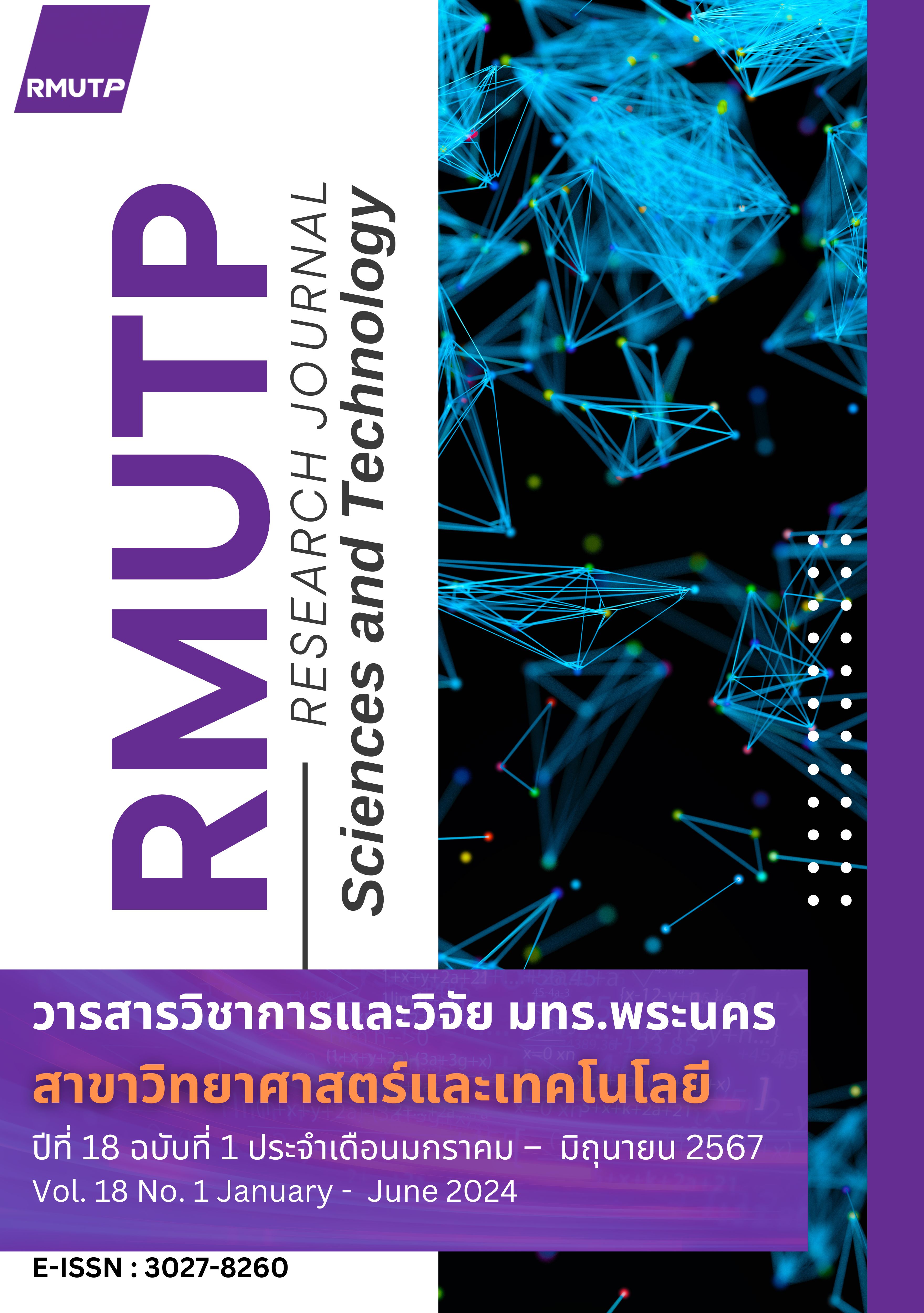Development of Interlocking Block Mixed with Waste Stone Dust and Para Rubber Wood Fly Ash
Main Article Content
Abstract
This research has the objective to develop interlocking block with waste stone dusts and para rubber wood fly ash. This research used the solder material ratio: gross which equals to 1:7 by the weight. The cement displacement ratio with waste stone dusts and para rubber wood fly ash was at the percentage of 0, 25, 50 and 75 by the weight. The water to material ratio was equal to 12% by the weight. The qualities of interlocking blocks were investigated after curing for 7, 14 and 28 days by comparing with the standard of community products of interlocking block (TCPS 602/2547) non-load-bearing type. The results showed that the compressive strength and the density of interlocking block tended to decrease with increasing the waste stone dusts and para rubber wood fly ash. The water absorption value of interlocking block tended to increase with increasing quantity of replacement materials. The best ratio of interlocking block replacing the cement waste stone dust was at 25% by the time that the density, water absorption, and compressive resistance were 1825 kgs per cubic meters, 250 kgs per cubic meters, and 3.47 megapascal, respectively. The best ratio of interlocking bricks replacing the cement with waste stone dusts and para rubber wood fly ash was at 25% considered at the age of 28 days by the time that the density, water absorption, and compressive resistance were 1,836 kgs per cubic meters, 256 kgs per cubic meters, and 3.28 megapascal, respectively.
Article Details

This work is licensed under a Creative Commons Attribution-NonCommercial-NoDerivatives 4.0 International License.
ลิขสิทธ์ ของมหาวิทยาลัยเทคโนโลยีราชมงคลพระนครReferences
Thailand Institute of Scientific and Technological Research (TISTR). (2021, January 8). What is interlocking block. [Online]. Available: https://tistrinterlockingblock.com/863/
Department of Industrial Works. (2021, May 8). Factory Information. [Online]. Available: https://userdb.diw.go.th/results1.asp
C. Choosakul, D. Chupan and K. Yongsata, “Mortar Mixed with Waste Stone Dust from Asphalt Concrete Mixing Plant,” in Proceeding of 9th Phayao Research Conference, Thailand, 2020, pp. 2068-2079.
A. Dasaesamoh, H. Maha and H. Chebueraheng, “Properties of Interlocking Block from Para Rubber Wood Fly Ash Mixed Narathiwat Klolin,” J.Res. Unit Sci. Technol. Environ. Learning, vol. 5, no. 2, pp. 202-208, 2014.
A. Dasaesamoh, P. Vaji, P. Salae and N. Naesae, “Para Rubber Wood Fly Ash Containing Interlocking Brick,” Journal of Yala Rajabhat University, Vol. 10, No. 1, pp. 77-86, 2015
C. Watcharachin and P. Kamhangrittirong “Developing non-load bearing concrete block from Rubber Tree Ashes and Water Hyacinth Fiber,” in Proceeding of 3rd National RMUTR Conference, Thailand, 2018, pp. 1-10.
T. Klathae, N. Sornpakdee, C. Buathongkhue and N. Deedard, “Utilization of Parawood Ash in Concrete Paving Blocks,” RMUTSV Research Journal, vol. 12, no. 1, pp. 36-48, 2020.
D. Tonnayopas and M. Thanomsirisilp, “Effects Used Engine Oil on Properties of Mortar Containing Pumice Blended Para Rubber Wood Ash,” RMUTP Research Journal, vol. 12, no. 1, pp. 53-63, 2018.
Portland Cement Part 1 Specification, TIS. 15 Part 1-2555, 2012.
Standard Test Method for Density of Hydraulic Cement, ASTM C188, 2016.
Standard Test Method for Laboratory Determination of Water (Moisture) Content of Soil and Rock by Mass, ASTM D2216, 1998.
Standard Test Method for Specific Gravity of Soil Solids by Water Pycnometer Specific Gravity, ASTM D854, 2014.
Standard Test Method for Particle-Size Analysis of Soils, ASTM D422, 1998.
Standard Test Method for Liquid Limit, Plastic Limit and Plasticity Index of Soils, ASTM D4318, 2010.
Standard Practice for Classification of Soils and Soil-Aggregate Mixtures for Highway Construction Purposes, ASTM D3282, 2015.
P. Khamput, “Interlocking Block Products from Tobacco Stem Waste,” in Proceeding of RSU National Conference 2019, Thailand, 2019, pp. 231-240.
K. Amornfa and A. Sangwan, “Engineering Properties of Interlocking Blocks with Coatings,” in Proceeding of 3rd National RMUTR Conference, Thailand, 2018, pp. 27-35.
Thai Community Product Standard of Interlocking Blocks, TCPS. 602-2547, 2004.
Standard Test Method for Sampling and Testing Brick and Structural Clay Tile, ASTM C67, 2018.
Standard Test Method for Compressive Strength of Dimension Stone, ASTM C170, 2017.
Standard Specification for Coal Fly Ash and Raw or Calcined Natural Pozzolan for Use in Concrete, ASTM C618, 2015.
K. Paopongpaiboon, K. Boonserm, V. Horsakulthai and P. Chindaprasirt, “Development of Interlocking Block Blended with Biomass Ash for Using As a Insulating Material,” Engineering Journal of Research and Development, vol. 30, no. 2, pp. 95-105, 2019.
D. Tonnayopas, S. Chaisuriya and S. Chantaramanee, “Effect of Rubber Wood Fly Ash Addition on Properties of Lightweight Aggregate Produced from Clear Bottle Glass,” Engineering Journal of Siam University, vol. 15, no. 29, pp. 1-12, 2014.
P. Chindaprasirt and C. Jaturapitakkul, Cement Pozzolan and Concrete, 7th ed. Bangkok: Thai Concrete Association, 2013.


